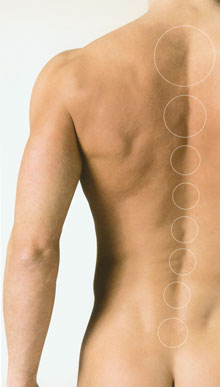Waterbeds and medicine

A patient confined to a bed or wheelchair for long periods of time could be suffering from a neurological, orthopedic or other illness. The illness itself presents certain problems, but being bedridden on a standard mattress can complicate it and cause secondary medical conditions. Metabolic functions, circulatory systems, urinary tract functions, sleep patterns, body temperature, blood chemistry, all are affected by lying in bed for great lengths of time. Therefore, selecting the right mattress is important in alleviating or preventing complications. The current medical literature indicates that utilizing controlled heated waterbeds in hospitals and nursing homes can benefit many bedridden patients. These benefits can also be derived at home by anyone with chronic illness.
The major problem with immobilized patients who require long term care is the development of bed sores. Research concerning chronic illness has revealed that 11-33 percent of the patients had bed sores. Treatment is expensive and difficult, and can more than double the duration of the average pateint's recovery period.
Bed sores or decubitus ulcers are caused primarily by pressure on the tissue between the bony prominences of the body and the supportive surface. This pressure constricts the blood vessels, reducing the flow of blood to the tissue cells. If prolonged, the cells die, forming an ulcer. Moisture on susceptible areas, friction, malnutrition, anemia, and shearing force of sheets can also aggravate the condition.
Heated waterbeds can alleviate or prevent many of the above problems.
The waterbed's construction can provide effective fluidic support to help incease circulation, relax muscles, induce sleep, reduce the indidence of pneumonia, and probably reduce the rehabilitation or convalesence period.
Who can benefit?
The principles of flotation have been documented to be especially helpful with he following conditions:
Premature infants and newborns:
Less pressure is exerted on delicate skin, less apnea spells take place, growth is enhanced, and a soothing effect is created by the warmth and motion that simulates the womb.
Orthopedic problems:
The uniform support of a waterbed removes excess pressure exerted on any one area of the body, in effect distributing the weight evenly over the entire surface. Thus, healing can take place in all affected areas.
Paralysis:
Paraplegics, quadriplegics, people who have had strokes, spinal cord injuries, etc., need less frequent changing of their position to prevent pressure sores.
Severe burns:
The reduced pressure on the skin allows more rapid healing with less discomfort and may decrease the need for medication.
 Trauma, accidents:
Trauma, accidents:
Aids in positioning and handling of the patient with severe or multiple injuries. It will help nurses in caring for these patients conserving energy in rotating the patient and simplifying the changes of dressings.
Plastic surgery:
Enhances healing of donor sites of major skin grafts. Waterbeds can make these patients more comfortable during the post-operative phase when there is fear and restriction of movement.
General surgery:
Post-hysterectomy hemorrhoidectomy, removal of kidney stones, colostomy, ligation or stripping of varicose veins all have uncomfortable recovery periods. The principles of waterbed systems can benefit these patients.
Cardiac rehabilitation:
Superior comfort is provided in the post operative phase of by-pass and open heart surgery patients. It is during this phase that the patient must lie on his back because the sternum, which was completely opened for the by-pass surgery, is going through the initial healing period.
Arthritis:
The even support eliminates pressure on any part of the skeletal system, while the heat increases circulation and soothes painful joints. Arthritic patients on heated waterbeds have demonstrated less "early morning stiffness".
Cystic fibrosis:
The increased motion and improvement in circulation helps loosen and drain the continuous mucous build-up in the lungs.
Hydrocephalics:
The flexible support prevents the enlarged head from extending too far forward, thereby removing the extra strain on the neck.
Cerebral palsy:
The motion and warmth relaxes and soothes the patient thereby reducing their spasticity and exaggerated muscle tone, and increasing rest and sleep.
Wheelchair patients:
Many studies with patients who must use wheelchairs indicate that water flotation units decreased skin temperature and may be helpful in preventing skin problems (e.g. ducubitus ulcers).
Waterbeds have become an essential therapeutic fixture in benfitting many patients with different medical problems.
How can a waterbed help?
For home care of various ailments, the controlled heated waterbed can help by offering a unique system of flotation. With this system the body is uniformly supported by the water, and the body weight is distributed more evenly over the surface. This eliminates pressure on the parts of the body susceptible to bedsores, thereby preventing their formation, and reducing the need for turning the patient. The spine is relieved of pressure, allowing the spinal musculature to relax. Circulation is improved. The motion and warmth of the bed helps the patient to relax, provides comfort and helps in producing better sleep habits. Cushions are also available for wheelchair patients. The same pressure-reducing properties of the waterbed can be utilized in these products.
